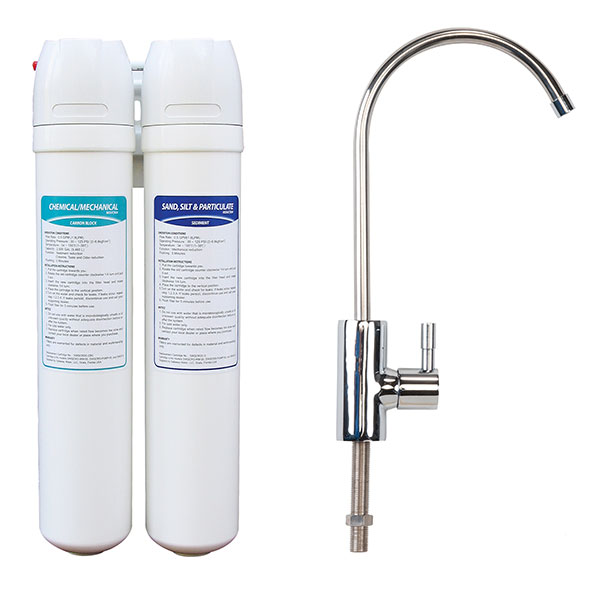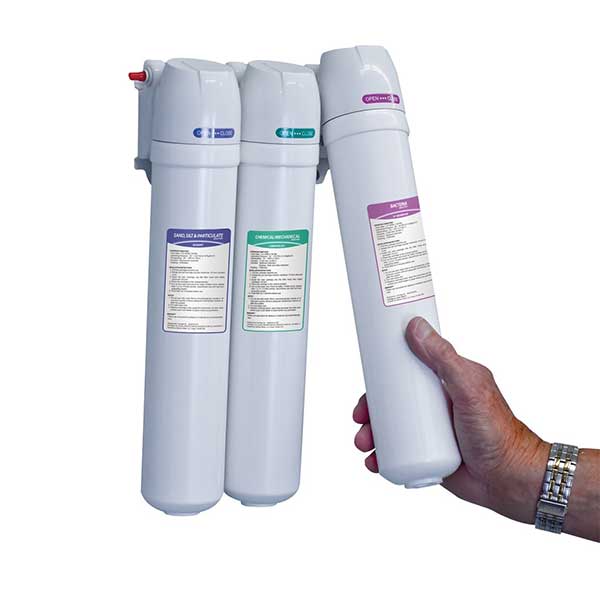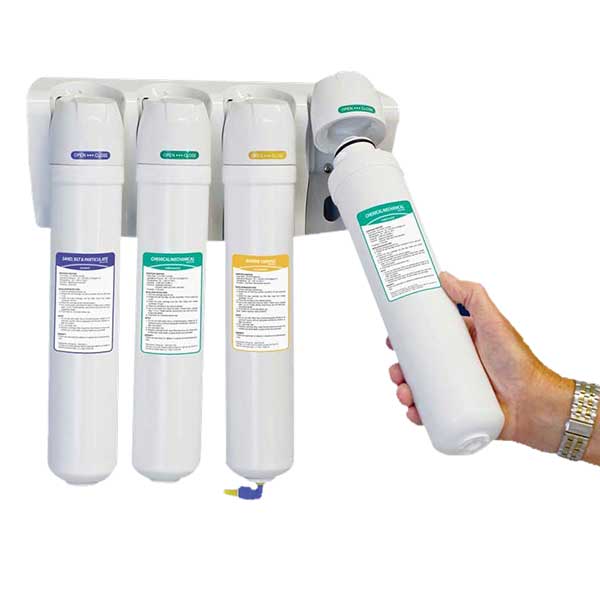Remove Lead From Your Water

What Is Lead & How To Remove Lead From Your Water
A lot of people are aware that lead poisoning, which is a health condition caused by the accumulation of lead in the body, is a thing. Lead has been known to be harmful to the human mind and body, especially in children.
Apart from coming in contact with lead-contaminated items before eating, one other way the body is exposed to lead is through lead-contaminated water. This lead contamination in water is something you can’t taste or smell. Sometimes, the only indicator that you could have lead in your water is that you have an old lead plumbing system that is in poor condition. So how then can you remove lead from your water?
What Is Lead?
Lead is a bluish-gray metal that occurs naturally in the environment, although in trace amount. And most times, these lead deposits are as a result of human activities like mining, manufacturing, or burning of fossil fuels.
Lead is also found in lead-based paints, batteries, metal pipes, and devices shielded from x-rays. Lead is usually removed from gasoline, paints, and ceramics products because of health concerns. The amount of lead in pipe solder has also been reduced in recent time for the same reason. But regulating the amount of lead in household water remains a problem faced by most homes.
How Does Lead Get Into Drinking Water?
Lead rarely occurs in water naturally. It usually gets into the water from the water supply system, which is why lead pipes are the main contributor to high levels of lead in tap water. Due to its resistance to leaks, lead is a major component for plumbing and pipe making. In many cities, lead pipes are still used to supply water to homes, and even in some home plumbing.
Usually, the lead is covered with a protective layer of metal oxides to prevent direct contact between water and the lead. However, extreme care must be given to avoid corrosion of this protective layer. Failure to prevent the corrosion of lead water supply pipes could result in a high amount of lead in drinking water.
Remember that water temperature and chemistry contribute to the corrosion of metal pipes. Hot water is more corrosive than cold water, and soft water is more corrosive than hard water. Acidic water (low pH) is also a source of household pipe corrosion. So another way lead gets into the water in the home is through corrosion of the household plumbing system. Since lead-based solder is used to connect household pipes most of the times, lead can contaminate your drinking water if the pipe is old and undergoes chemical corrosion. Lead can also enter the water when there is a strong vibration as you use faucets.
How Do You Know If There’s Lead in Your Water?
The U.S Environmental Protection Agency has set 15 micrograms per liter (µg/L) as the maximum allowable lead level for drinking water. Also, the maximum contaminant level goal (MCLG) for lead, which is the safety margin with no possible side effect or health risk, is zero. Any significant amount of lead beyond these regulations is a potential health risk.
If, for any reason you suspect that your drinking water is contaminated with lead, or you want to know the lead level in your home water, reach out to your water supplier to get the latest water quality report or contact your state certification officer for labs that can test your drinking water for free.
Health Risks of Lead in Drinking Water
Lead poisoning can cause so many health issues, both long term, and short term. Some of these health effects of lead in water include abdominal pains, joint and muscle pains, fatigue, high blood pressure, loss of appetite, anemia, and even kidney dysfunction, as well as headaches, memory loss, and sleep problems. Drinking lead-contaminated water can also cause certain developmental problems and intellectual disabilities in children, like slowed growth, hearing problems, behavioral problems, low IQ, and learning difficulties.
Useful Tips for Reducing Lead Intake
Before talking about the solutions to lead in water, here are a few tips to reduce the chances of consuming water that contains lead.
- Avoid getting hot water from the designated hot water faucet for cooking, preparing tea or baby food. This is because direct hot water may contain a high amount of lead as temperature aids corrosion. Get cold water from the tap instead, and then heat it yourself to reduce the likelihood of lead contamination.
- Flush your pipes by letting the water run out for a while before using. This is because the longer the water stays in the pipes, the higher the chances of contamination.
- Consider treating your drinking water using treatment methods that are designed to remove lead from water.
Remember that heating or boiling your water will not remove lead. Instead, the lead concentration increases as some of the water evaporate during the boiling process.
How to Remove Lead from Water
Lead removal from water can be done using specialized lead removal water filters that are built for different water conditions and purposes. Other methods of removing lead from water include reverse osmosis, distillation, filtration (ion exchange filtering or granulated activated carbon filtering).
Reverse Osmosis
This method of removing lead from water traps larger ions like lead and iron present in the water when water is forced through a membrane. You can easily install a point-of-use reverse osmosis system near your kitchen sink. The reverse osmosis system may be a bit slow – kind of; producing an average of about 50 to 100 gallons of treated water daily, but it is also cost effective. The taste of your water may also be affected as the minerals are removed by this method too.
So does reverse osmosis remove lead from water? Yes. Reverse osmosis filters are often considered as the best water filter for lead removal. Their performance is not affected by the presence of other minerals in the water, as compared to other water treatment filters.
Distillation
The water distillation system works by removing the dissolved solids from the water through distillation. Some simpler versions are designed for home use. However, one limitation of this method is that it can only produce a small amount of treated water per day. Plus it requires energy to heat the water, which is not always cost effective.
Ion Exchange
Ion exchange filters remove lead molecules through absorption. This takes place in a filter cartridge containing mineral particles or resins and can be part of your installed point-of-use system for water treatment.
GAC Filters
The granulated activated carbon filter is another form of a point-of-sale water filter system. It is pH sensitive and works more efficiently at a water pH that is not more than 7. It is also one of the least expensive whole house water filters for lead removal.
If you have further questions about lead contamination and water filters that remove lead, do not hesitate to reach out to us. Most household water problems come from the water supply itself. Helping you achieve clean, treated water is our specialty, and we look forward to assisting you.





